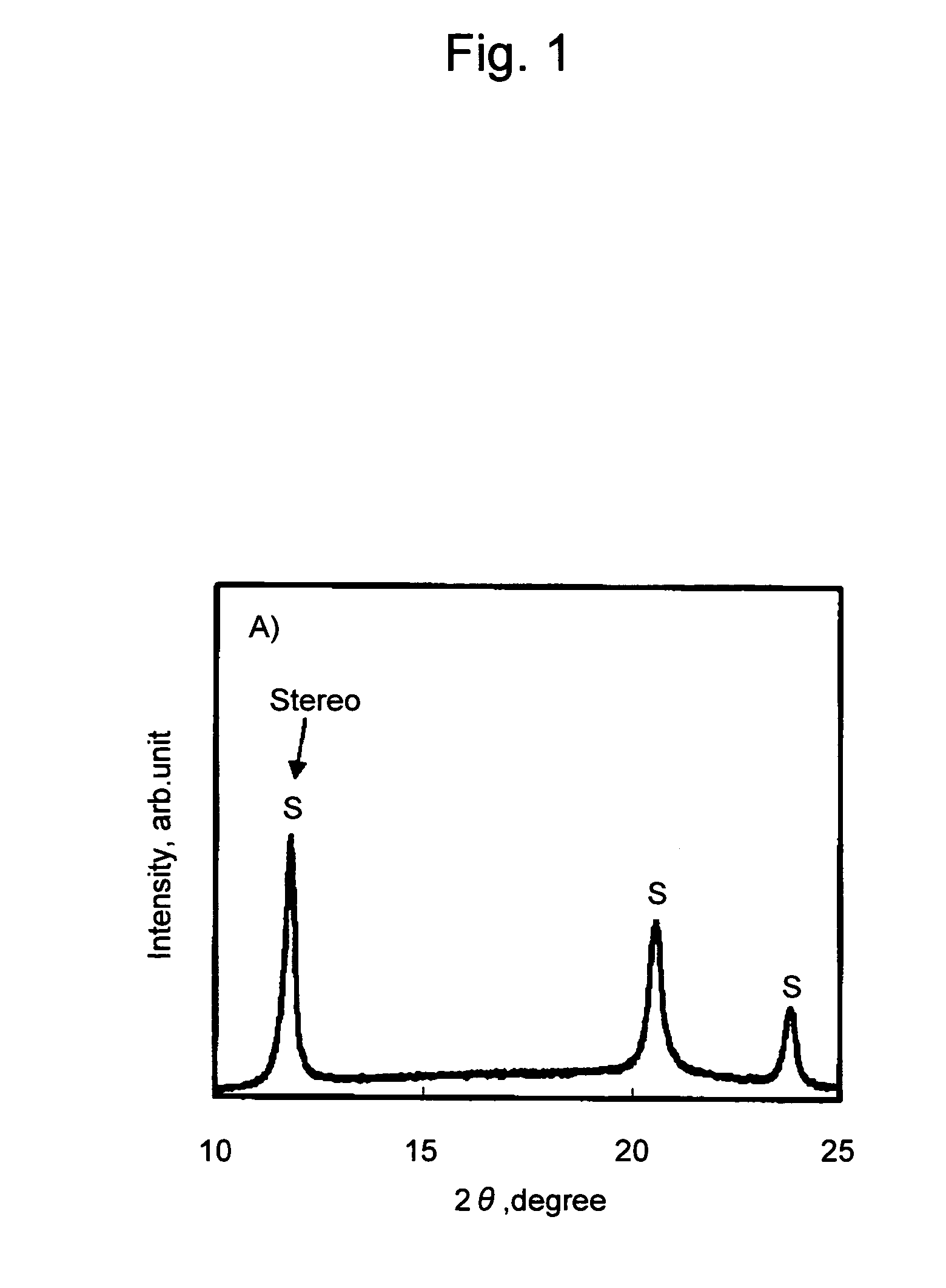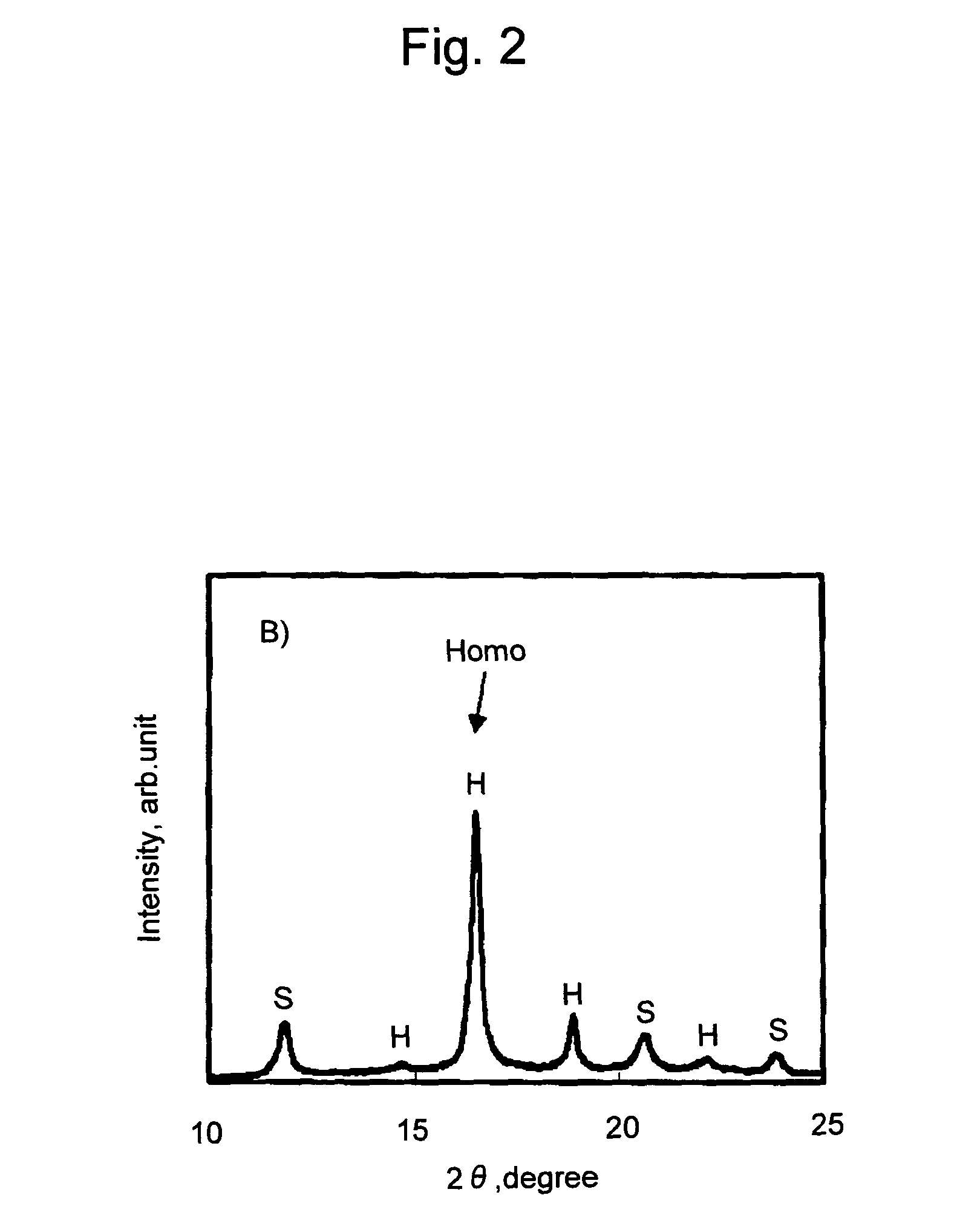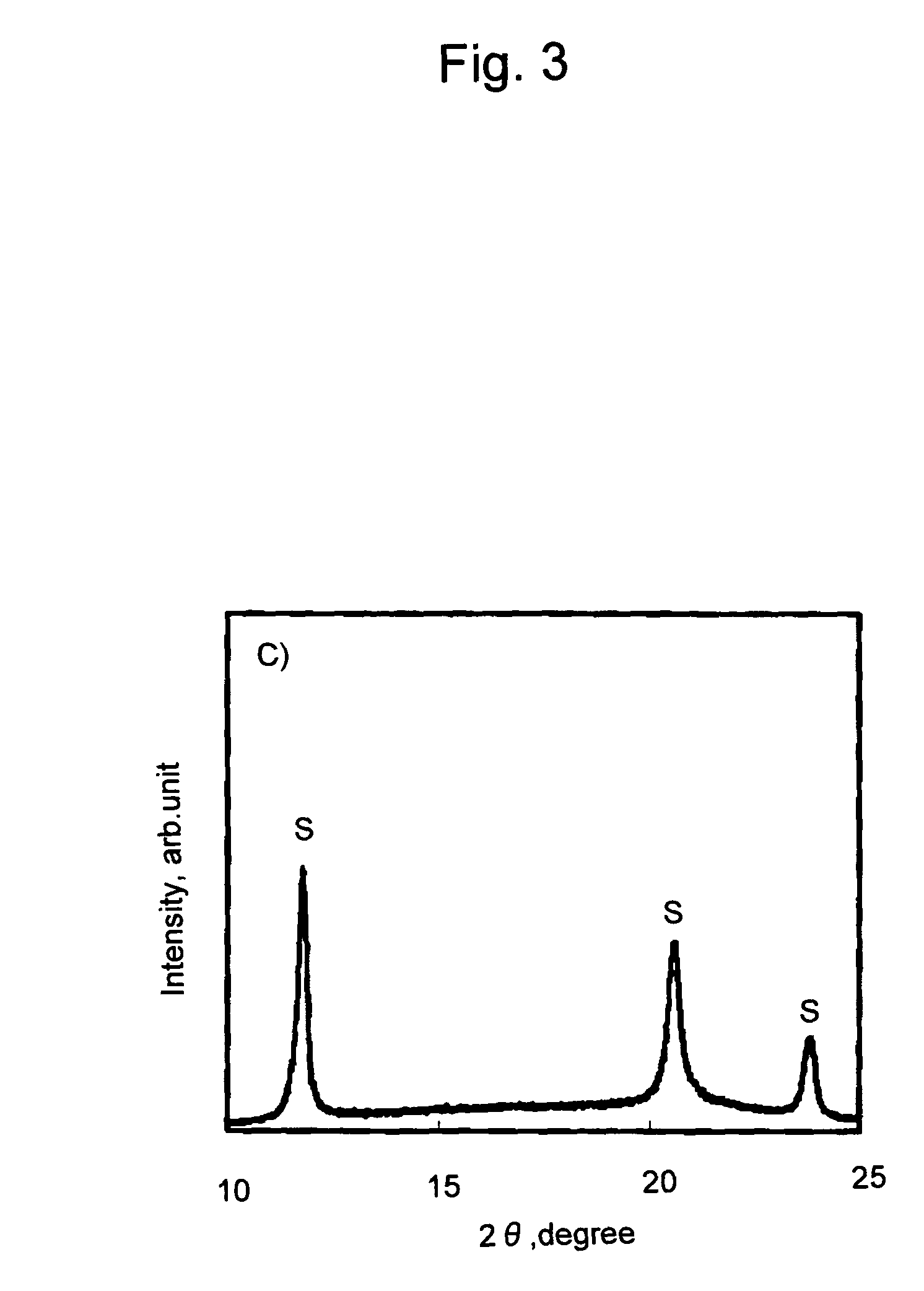Polylactic acid resin composition and molded article of the same
a polylactic acid resin and composition technology, applied in the field of polylactic acid resin composition and molded articles, can solve the problems of insufficient improvement in heat resistance and crystallization speed, insufficient ratio of stereocomplex crystals of poly-l-lactic acid and poly-d-lactic acid, and the like, and achieves a high ratio of stereocomplex crystals. , the effect of high crystallization speed
- Summary
- Abstract
- Description
- Claims
- Application Information
AI Technical Summary
Benefits of technology
Problems solved by technology
Method used
Image
Examples
example 1
[0068]D-lactide (100 g), dodecyl alcohol (0.1 g), and tin octylate (100 mg) were placed in a reaction vessel and the reaction vessel was evacuated to 10−2 mmHg. The temperature was gradually raised while thoroughly agitating the mixture, and held at 160° C. for 1 hour. The obtained reaction product was dissolved in chloroform and added dropwise to methanol to isolate and purify poly-D-lactic acid (PDLA). The weight-average molecular weight of the poly-D-lactic acid thus obtained was about 120,000.
[0069]Subsequently, 0.5 g of poly-L-lactic acid (PLLA #5400, Toyota Motor Corporation, weight-average molecular weight: 140,000; optical purity: 99%), 0.5 g of the poly-D-lactic acid obtained as above (PDLA, weight-average molecular weight: 120,000; optical purity: 99%), and 0.01 g of xylylene bisstearyl urea (Hakreen SX, Nippon Kasei Chemical Co., Ltd.) were mixed with agitation with the aid of 10 ml of chloroform. The obtained mixture was added dropwise to a petri dish and chloroform was ...
example 2
[0070]A film of a polylactic acid resin composition was prepared in the same manner as in Example 1, except that 0.01 g of talc (average particle diameter: 4.0 μm, Micro Ace P-6, Nippon Talc Co., Ltd.) was further added, in addition to poly-L-lactic acid, poly-D-lactic acid, and xylylene bisstearyl urea. The obtained film was subjected to DSC measurement as a sample. The results are shown in Tables 1 and 2 and FIG. 6.
example 3
[0071]L-lactide (100 g), 1,12-dodecanediol (3; g), and tin octylate (100 mg) were placed in a reaction vessel and the reaction vessel was evacuated to 10−2 mmHg. Subsequently, the temperature was gradually raised while thoroughly agitating the mixture, and the mixture was held at 150° C. for 3 hours. The resulting reaction product was dissolved in chloroform and added dropwise to methanol to obtain poly-L-lactic acid (PLLA) having a weight-average molecular weight of approximately 23,000. D-lactide (40 g) and the resulting PLLA (80 g) were homogeneously dissolved therein under a nitrogen atmosphere at 200° C. The resultant was cooled to room temperature, tin octylate (40 mg) was added thereto, and the reaction was allowed to proceed at 150° C. for 3 hours. The obtained reaction product was dissolved in hexafluoroisopropanol, and the resultant was added dropwise to methanol to obtain a polylactic acid stereoblock copolymer (PDLA-PLLA-PDLA) having a weight-average molecular weight of ...
PUM
| Property | Measurement | Unit |
|---|---|---|
| temperature | aaaaa | aaaaa |
| melting temperature | aaaaa | aaaaa |
| 2θ | aaaaa | aaaaa |
Abstract
Description
Claims
Application Information
 Login to View More
Login to View More - R&D
- Intellectual Property
- Life Sciences
- Materials
- Tech Scout
- Unparalleled Data Quality
- Higher Quality Content
- 60% Fewer Hallucinations
Browse by: Latest US Patents, China's latest patents, Technical Efficacy Thesaurus, Application Domain, Technology Topic, Popular Technical Reports.
© 2025 PatSnap. All rights reserved.Legal|Privacy policy|Modern Slavery Act Transparency Statement|Sitemap|About US| Contact US: help@patsnap.com



